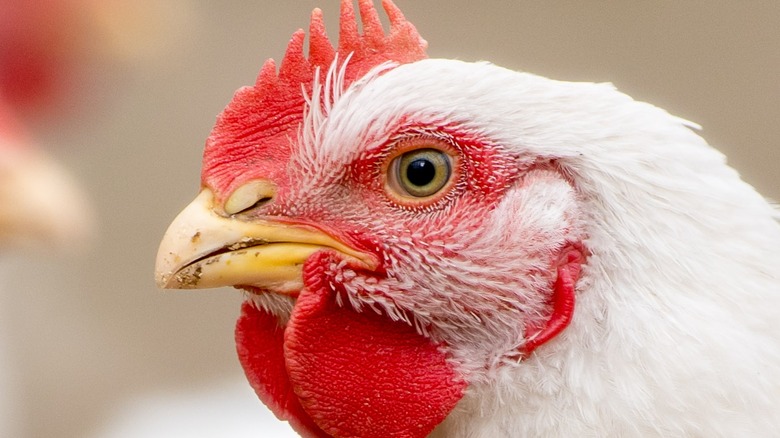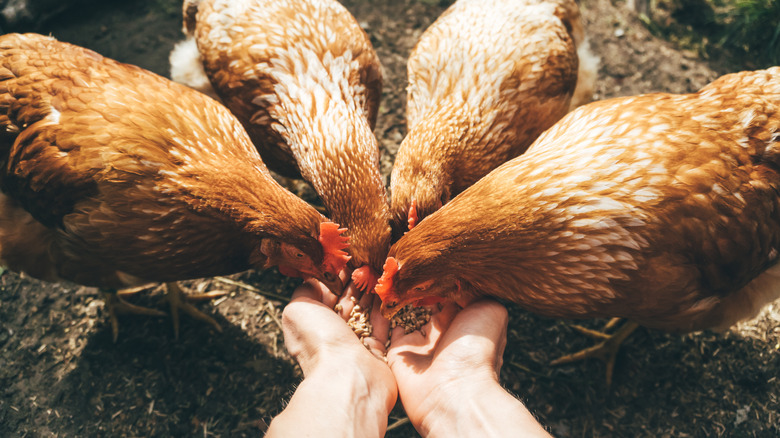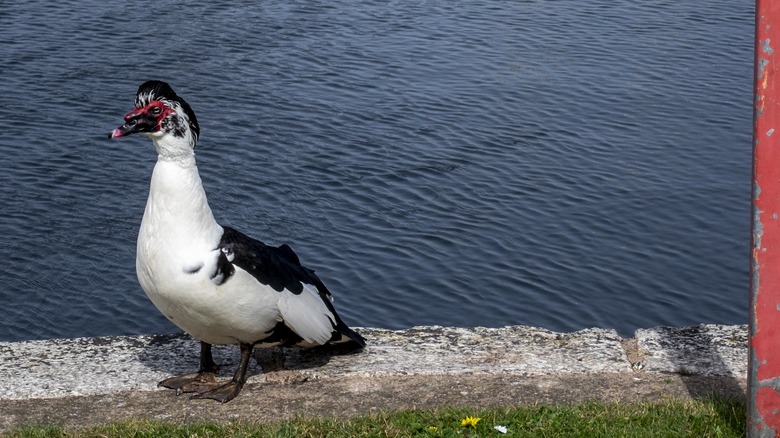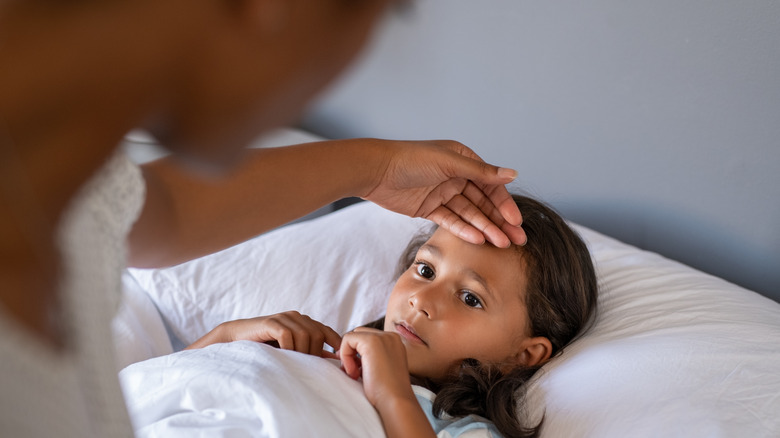The Science Behind When Bird Flu Can Infect Humans
The world is currently in the midst of a major pandemic of avian influenza, or, in plainer language, bird flu. Between October of 2021 and late May of this year, the H5N1 strain of bird flu has infected tens of millions of poultry like ducks, chickens, and turkeys in North America, Europe, Asia, and Africa, according to Nature. In the U.S. alone, it has infected over 40 million domestic birds in 36 states, according to a June 27 posting by the Centers for Disease Control and Prevention (CDC). Worldwide, a total of 77 million domestic birds have been killed to prevent the spread of the disease, according to Nature.
The current outbreak is particularly concerning, however, because it is so infectious for wild birds. It has killed around 400,000 non-domestic birds in 2,600 outbreaks. While this is bad news for the birds themselves, it's also a problem because wild birds are not contained on a farm and can therefore spread the disease as they migrate. Yet despite the high number of bird infections and deaths — double the wild birth deaths caused by the last major outbreak, in 2016 and 2017 — only two humans have caught the virus. But how do humans catch a bird disease at all?
Human infection
The virus that causes flu in birds doesn't often cause it in humans, according to Mayo Clinic. That said, human infections are not impossible. "Bird flu" is often talked about in the media as if it's a single disease, but there are actually more than 12 types out there. Two that have caused disease in humans are H5N1 and H7N9. The current outbreak is caused by the H5N1 virus, according to the CDC.
The virus that causes bird flu is present in birds' feces, mucus, and saliva, according to the CDC. It can also linger in the air as droplets or dust. People can therefore contract it in one of two ways. First, they can touch an infected surface and then touch their eyes, nose, or mouth. Second, they can breathe in droplets or dust that contain the virus. People can also get it if they eat undercooked poultry or eggs, according to Mayo Clinic. However, most cases involve interacting with a sick bird or its secretions without wearing protective equipment, according to the CDC. For example, people caught bird flu while cleaning or plucking sick birds during the 2014 outbreak, according to WebMD. Other potential sources of infection have been open air markets where birds are sold or water contaminated by bird feces. Still, there are a few incidents in which people have gotten sick without coming into contact with sick birds or contaminated surfaces, the CDC said.
Case study: UK
The first case of human infection in the most recent bird flu pandemic illustrates the most common forms of transmission between birds and people. The case occurred in the U.K. and was confirmed by the government on January 6. The unlucky patient zero was 79-year-old Alan Gosling of Devon, according to Devon Live. Gosling was a retired train worker who was also very fond of ducks. He began to feed some of the ducks living near his home and eventually adopted 20 of them as indoor pets, while another 100 continued to live outside his home. Gosling told the Mid-Devon Advertiser that he raised some of the ducks from infancy and had known them for 12 to 13 years.
Then, in December of 2021, he noticed some of the ducks outside his home getting sick. The ducks ultimately tested positive for bird flu, and a total of 160 were killed. Then, Gosling himself was tested and the results came back positive for H5N1. This made him the first known human to contract the version of H5N1 that emerged in the fall of 2021, according to the CDC. However, Gosling suffered more emotionally than physically from the ordeal. "As far as health is concerned, I'm fine," he told the Mid-Devon Advertiser, "but I can't stop thinking about the ducks." His daughter-in-law Ellesha Gosling told Devon Live why it was so hard. "He saw all of his ducks killed," she said, "and they were like his closest friends." Gosling's parakeets and cockatoo were also killed to prevent spread of the virus.
What's it like?
If you are one of the unlucky humans who manages to catch bird flu, what can you expect? Some people, like Gosling, experience no symptoms, according to the CDC. Others can experience mild symptoms, like pink eye, or severe symptoms, like pneumonia. Bird flu in humans often starts off like a case of the regular influenza virus, with fever, aches, a cough, and a sore throat, according to WebMD. If the case progresses, it can result in stomach issues, difficulty breathing, or even neurological problems like seizures.
Bird flu, like the regular flu, can also be deadly in humans. In fact, H5N1 has a much higher death rate than human flu. Mortality rates from influenza range from 0.01% to 0.09%, according to The Asahi Shimbun. However, of the 864 cases of H5N1 recorded by the World Health Organization between 2003 and 2022, 456 resulted in death. That's a mortality rate of more than 50%. One example of H5N1 deaths occurred in Vietnam in 2005, when two children contracted bird flu infections in their stomachs and brains, according to WebMD.
Human-to-human transmission
It is rare that humans pass bird flu to other humans, but it can happen, according to the CDC. However, it tends to require extensive contact and does not spread widely in the human population. Most of the cases have involved family members or been in hospital settings, according to the CDC's list of past examples. For example, in 2003 there was an outbreak of the H7N7 strain of bird flu at poultry farms in the Netherlands, according to a study published in Eurosurveillance. Testing revealed that the disease spread to 86 poultry workers and three people who lived with poultry workers.
Another incident occurred in Thailand during an H5N1 outbreak in 2004, according to the New England Journal of Medicine. A mother came to care for her daughter, who had gotten sick after interacting with chickens in her home. The mother nursed her in the hospital without any protection for 16 to 18 hours and eventually died of pneumonia, despite having no known interactions with infected birds. The girl's aunt, who also helped to nurse her, tested positive for H5N1 as well. Not every potential person-to-person case has involved family or household members. In China in 2014, a man tested positive for H7N9 after he spent six days in a hospital ward with another man who was sick with the same strain, according to a study published in Emerging Infectious Diseases (posted at the National Library of Medicine).
A future human pandemic?
While bird flu isn't a major concern for human health right now, scientists are worried that this might not always be the case. That's because flu viruses have a tendency to mutate and spread from species to species, according to Scitable. For example, a 2014 study published in Nature found that the strain of flu behind the 1918 pandemic most likely originated in North American birds. That pandemic went on to infect one-third of the world's population and kill at least 50 million people, according to the CDC.
But how would a bird flu mutate to spread easily among humans? A study from 2017 provided one example, according to a report in PLOS Pathogens (via ScienceDaily). Researchers looked at the H7N9 strain of bird flu. This strain, like all flu viruses, has a protein called hemagglutanin that enables it to stick to the cells of the animals it infects. Flu viruses have different types of hemagglutanin that range from H1 to H16, with H1, 2, and 3 present in human viruses. Currently, H7N9's genes code its hemagglutanin to connect to bird cells, not human cells. However, the researchers discovered that mutations in just three amino acids would allow the virus to bind to the receptors in human cells, according to the study published in PLOS Pathogens. Scientists can now keep their eye out for these particular mutations. "If these amino acid mutations are observed to arise during natural selection in humans, timely actions could be taken," the study authors wrote.





